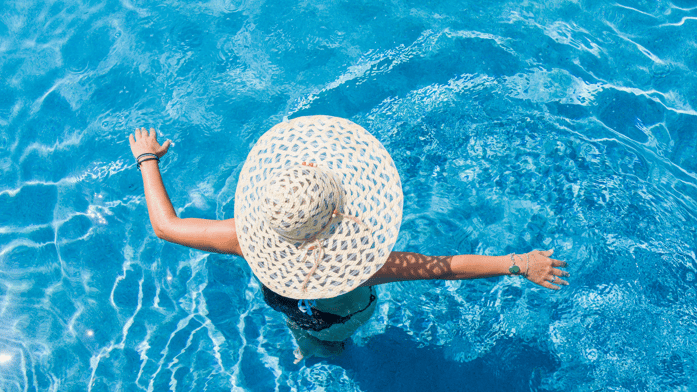
Editor's note: This blog was originally published in April 2016, and has been completely revamped and updated for accuracy and comprehensiveness.
You’ve made the decision to purchase an above ground pool! Most likely, the first question you will ask is 'How much does an above ground pool cost?' While I could easily start spouting off different prices on each pool we offer in our store, we believe the best way to answer that question is to help you understand all the pieces involved in the pricing of an above ground pool.
(Considering a pool? Here's free advice for first-time buyers.)
Because there are so many variables to above ground pools, changing even one piece of the puzzle, changes the price - sometimes substantially. Since we want to ensure you have the information to make the best decision possible, we want to take the time to explain all the above ground pricing variables in detail.
The main pricing variables we are going to talk about with this blog post are:
- Pool Size
- Pool Kit
- Pool Liner
- Pool Equipment (Pump & Filter)
- Pool Installation
- Pool Ladders / Maintenance Equipment
#1 - Pool Size
Above ground pools come in a lot of different sizes: 12', 15' 18’, 21’, 24’, 27’, 30’, 33’ and a variety of different ovals. Generally, the smaller the pool, the cheaper the price, however, there are some variables to this logic. 
Pool retailers will stock an assortment of sizes at their location or will have a local/nearby distributor they can pull from if needed. Since these pools are ordered in bulk and shipped together, they have a fairly competitive price point. If you need a size that is not stocked or readily available by your retailer, the shipping on a single pool kit can actually cause a smaller pool to be more expensive than a larger size.
For example, if your backyard area will only allow for a 15' pool and your retailer does not have that size in stock, the price to ship the pool kit and get the correct liner size for that pool can easily result in a price that is actually more expensive than an 18' pool.
Additionally, ovals are more expensive than their round counter-parts. The additional bracing needed to ensure the strength of the pool wall results in a higher pool kit price, simply because it involves more raw materials. So, you wind up paying more for a smaller pool. However, that added cost is generally worth it if you have a challenging backyard to work with!
#2 - Pool Kit
The actual pool kit will contain all of the components for the shell of the pool - the wall, bottom track (this is the component the wall sits in), top track (this component goes around the top of the pool wall and holds the liner in place), top ledge - the decorative railing around the top of the pool, and the posts that are installed at intervals around the exterior of the wall.
The pool kit components, except the wall, are either all metal, all resin, or a combination of metal & resin - referred to as a hybrid pool. The pool wall will always be made out of metal. There are pros and cons of each one, which we will discuss below, but we have found they all offer a great quality product, and generally, the decision really comes down to the actual look / aesthetics of the pool. There will always be one pool model that just grabs your attention and fits your style - similar to the furniture in your house.
ALL METAL POOLS

An all metal pool is generally referred to as an 'entry level pool', simply because of the price point. They are the least expensive of your above ground pool kits because all of the components are made of metal. However, they are going to have the same life expectancy of any of the other pool options.
ALL RESIN POOLS
All resin pools will be the most expensive pool kit option as all of the components, except the pool wall, are made from resin, which is more expensive than metal. There are two types of all resin pool kits: injection molded and extruded. We have found, in our experience, that injection molded resin products hold up slightly better during the storm season here in Oklahoma.
Resin pools will hold up the best if you plan to use saltwater as your primary sanitizer. Additionally, the top ledge will stay cooler to the touch in the heat of the summer, and you don't tend to have the concerns regarding rust like you do with all metal components.
HYBRID POOLS
The last option will be pools that have a mixture of metal components and resin components. The actual product mix will vary based on brand/model - some pools may have resin posts but metal top ledges and bottom tracks, while others could have a metal top ledge and resin posts. The goal of the hybrid pool is to get the best of both worlds - the benefits of resin, while still keeping the pool kit cost low. Cost on hybrid pools should fall in between all metal and all resin - they tend to be the 'happy middle'.
Opinions will vary on which combo of resin vs metal components is best - just make sure you understand what you are looking at, and how the combination of components will affect you. If you have strong opinions about using saltwater for example, you really want your top ledge to be resin since that is the component that will have the most contact with the water.
#3 - Pool Liner
There are a variety of opinions out there regarding how important the above ground pool liner actually is. We take the stance that it is quite possibly the most important part of the entire pool - it is essentially what keeps the water from rushing out of your pool! Some pool retailers feel it is more important to spend money on a solid wall and you can then get a thinner liner since the wall will hold up on its own. There are strong arguments to be made for each option. We want to ensure you have all the information, and then you can decide which component is most important to you, and find the retailer that is the best fit. 
This is a list of above ground pool liners that are generally stocked at pool retailers - these are in order from least expensive to most expensive.
- Plain Blue Overlap: these liners range from 12 to 20 millimeters thick, are a solid blue color, and will overlap the pool wall
- Blue Overlap with Print Bottom: these are the same as the Plain Blue overlap - there is simply a design printed on the bottom
- Full Print Overlap: these liners will overlap the pool wall, but will come in a variety of prints & designs; they also range from 12 - 20 millimeters thick
- Full Print Beaded: these liners range from 12 to 22.5 millimeters thick and have a bead around the top of them that will fit into the top track of the pool (you will not see any of the liner hanging over the outside of the pool wall with this liner type)
We tend to lead customers to liners that are 18 millimeters or thicker. Thinner liners will work fine in some instances, we have simply taken the approach of finding the most cost effective option, and 18 millimeters seems to be the tipping point of that scale.
Also, do not buy into the hype that a thicker liner is better. Some pool retailers will tell you they have the thickest above ground pool liners available at 30 millimeters. This simply is not true. These liners are referred to as ‘Perma 30’, which is a pool liner that has an 18 millimeter thick wall with a 12 millimeter thick bottom. They add these thicknesses together to get to a 30 millimeter thickness, however, adding the side and bottom thickness together is not an accepted industry practice. And quite frankly, a 30 millimeter liner is simply too heavy for an above ground pool wall - the attempted installation would be a nightmare.
***Keep in mind we are only talking about liners for above ground pools in this blog. Inground pool liners can be thicker because the wall can handle the weight.
#4 - Pool Equipment (Pump & Filter)
On to your pool equipment - pumps and filters. Pricing will depend on the size of pump and filter (commonly referred to as the ‘system’) needed. You will find that both 1 speed and 2 speed pumps are used on above ground pools. The 2 speed pumps are occasionally offered as a standard option, but are generally offered as an upgrade. A 2 speed pump simply allows for the flexibility of a high and low setting, allowing the pump to remain on 24 hours / day on low, and generates some energy efficiency. Additionally, you will see 0.5 hp pumps up to 2 hp pumps being offered. The hp (horsepower) on the pump will determine how quickly the water can be pushed through the filter and therefore cleaned. Ideally, you want your pool water to pass through the filter (or turnover) at least 4 times in a 24 hour period.
Sand filters are the most common filtration installed on above ground pools. They are easy to maintain and cost effective. The sand filter size will be based on the size of your pool – common sizes in the industry range from 100# - 400# sand filters. (The pounds refer to the quantity of filter media required for operation.)
There are alternative options t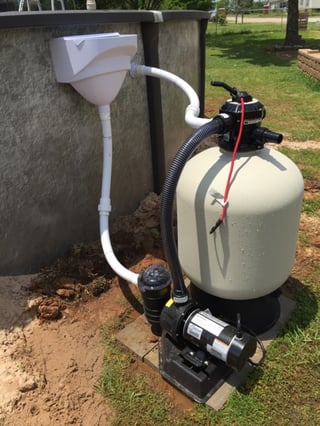 o sand filters - cartridge filters are an optional upgrade. These types of filters are becoming very common on inground pools. They use a filter cartridge to clean the water instead of sand. This filter can then be removed and cleaned with a high pressure hose nozzle, or you can soak them in an 'acid bath solution' and then rinse.
o sand filters - cartridge filters are an optional upgrade. These types of filters are becoming very common on inground pools. They use a filter cartridge to clean the water instead of sand. This filter can then be removed and cleaned with a high pressure hose nozzle, or you can soak them in an 'acid bath solution' and then rinse.
Another alternative is a DE filter. The advantage of a DE filter is that it filters the water to the smallest micron level, and will therefore keep the pool water cleaner than a sand filter or cartridge filter. It is not widely used though, due to the high cost of maintenance to keep it performing at optimum levels.
Your pool retailer will generally have a standard 'system' (pump and filter) that is put with their pool kit. You can always ask to upgrade the pump if you would like a different size for your pool, or if you prefer a two speed pump vs a one speed pump. Since sand filters are the most cost effective, they are usually the standard filter offered for new above ground pools. There is no upgrade to the sand filter size – it is strictly based on the size of your pool.
Depending on your retailer, you may have the option to upgrade the filter media that is used in your filter. Sand is common, but there are other options, such as glass filter media. The glass filter media is more expensive than the sand, but does have pros – the main one – it doesn’t ever need to be replaced, whereas your sand will need to be replaced at some point over the life of your filter, generally every 3-5 years. You can also ask about upgrades to cartridge filters or DE filters, although some retailers may not stock these and would have to special order them.
#5 - Pool Installation
The actual installation of the pool will have a few pricing variables. The main variables are the size of the pool you are installing and where you live. It will typically cost more for a larger pool installation, and you will see increases in price the further away your location is from the pool retailer. These two variables are pretty straight forward.
Other variables that will affect the price of the installation are the amount of dirt work necessary, the amount of sand needed, if you purchased a hard bottom for your pool, and if you plan to bury your pool at all.
Dirt work is the first variable we will tackle. This is dependent on how level your actual install site is. If the installation crew can level out the location within the first 6", there is typically not a charge. If it will take more than 6" of dirt movement to level the location, you will see an increase in the install cost.
If you are having a standard sand bottom installed, it will require tons (anywhere from 4 - 12) of masonry sand. Some retailers will include the cost of the sand in their installation price; others will require you to provide the sand yourself. Make sure you know if your retailer requires you to coordinate the delivery of the masonry sand, and depending on the size of the pool, you will be able to calculate the price of the sand. There is also a delivery fee on the sand, so make sure to request a total price from your sand vendor, and not just the price of the sand so you aren't surprised by an additional delivery charge.
Most retailers will offer upgrades for your pool bottom, to some type of hard bottom. If you opt to go this rou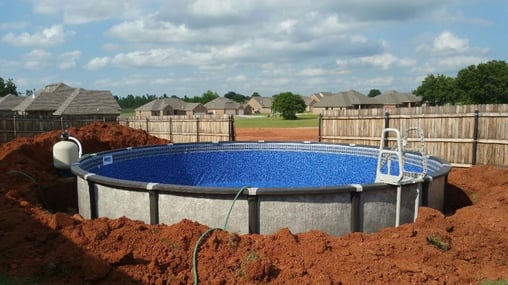 te, there will be an upcharge based on the type of bottom you select ( vermiculite, plastic, foam, etc), and the size of your pool.
te, there will be an upcharge based on the type of bottom you select ( vermiculite, plastic, foam, etc), and the size of your pool.
Lastly, there is generally an option to partially bury your above ground pool. Similar to the dirt work charges discussed above, the cost for this service will depend on how deep you plan to bury the pool and the size. Depending on the dirt in your location, there may be an upcharge if you installation crew hits rock or shale of any sort. Knowing your soil composition will definitely help you decide whether or not burying your pool will be cost effective. If you live on shale or rock, burying your pool will get extremely costly in a hurry!
#6 - Pool Ladders & Maintenance Equipment
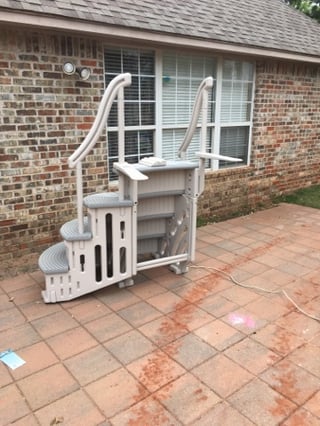 Ladders
Ladders
A pool ladder will generally be included with your pool kit. They will most commonly be a simple A-Frame ladder with ladder steps on both the outside and inside of the pool. These ladders work great on above ground pools.
Entry systems are larger and sturdier than most A-Frame ladders and come in a variety of sizes. They have ladder steps on the outside of the pool and more of a cascading entry system with larger steps on the inside of the pool. The entry systems will include both the inside steps and the outside ladder that can be removed for safety. Most entry systems feature a handrail to assist with getting down into the pool and back out again.
Maintenance Equipment
Maintenance equipment is obviously a must for an above ground pool. Look for the items to be included with your pool purchase. In order to keep the pool kit price down, some retailers will show these as 'add-on' items, but since they are vital for pool ownership, our take is they should be included with your purchase. You will need at a minimum, a telescopic pole (tele-pole for short), skimmer net, brush, manual vacuum, vacuum hose, and a backwash hose. You should also have test strips or a drop tester - something to test your water.
Summary
With our above ground pool experience, we have narrowed down the selections we offer, and have gotten rid of the combinations that simply do not work. While we understand that price point is key, we also want to ensure we deliver the best product quality, safety, value, and lifetime cost for the customer. Our approach is not solely based on the lowest price, but what is going to make above ground pool ownership functional and enjoyable.
In closing, we will look at a great combination we offer, that would be an ideal entry level package. This would include an all metal 18’ pool kit, beaded liner (20 mil), 250# sand filter with a two speed, 2 hp pump, entry system, maintenance equipment package, and a local installation without any additional dirt work. You would be looking to spend around $3,999 + taxes for this above ground pool.
Wondering if there's a 'best' time of year to buy an above ground pool? Check out this blog where we review common promotions for each season of the year to help you decide when the best time to buy an above ground pool is for your specific needs.
Looking to price a different combination to fit your backyard and lifestyle? Feel free to give us a call or book your consultation - we can even bring the showroom to the comfort of your living room!

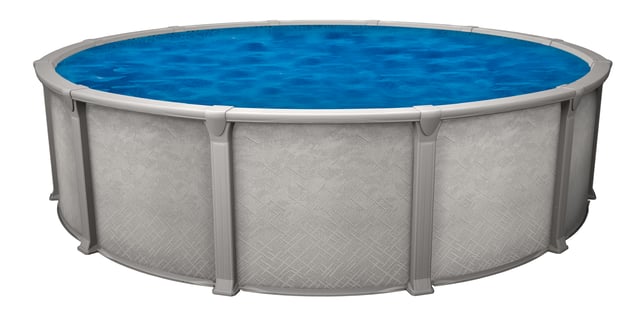


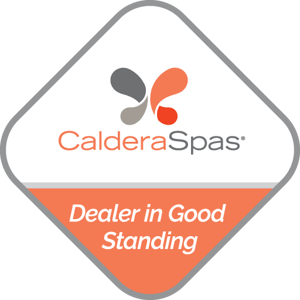

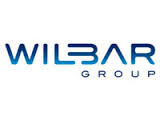


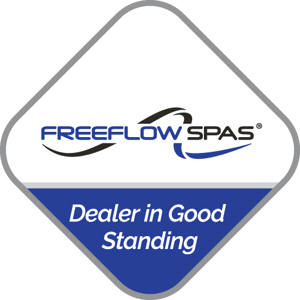
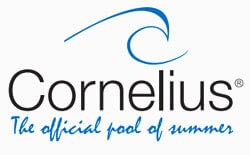
.png?width=263&name=May%20%20CL%20%20(1).png)